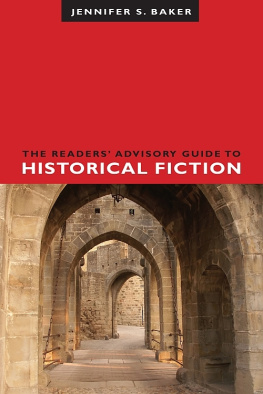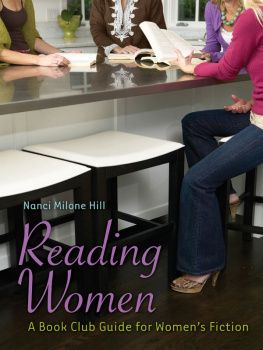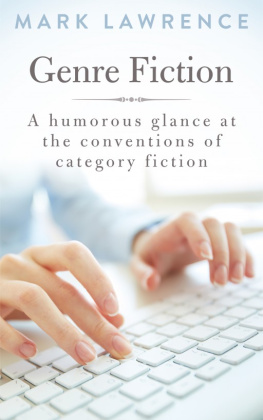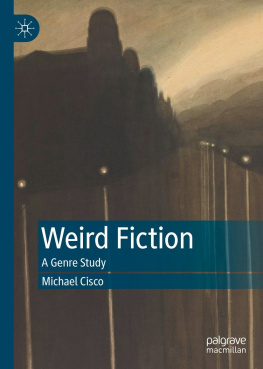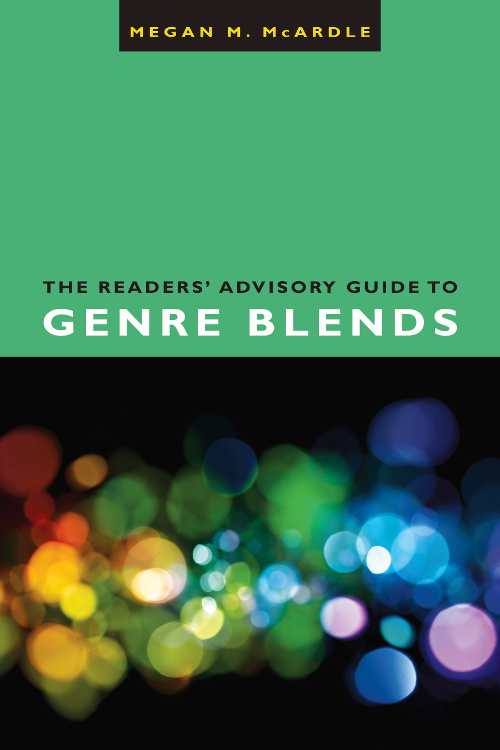
ALA READERS ADVISORY SERIES
The Readers Advisory Guide to Historical Fiction
The Readers Advisory Guide to Horror
Serving Boys through Readers Advisory
The Readers Advisory Guide to Graphic Novels
The Readers Advisory Guide to Genre Fiction, second edition
Research-Based Readers Advisory
The Readers Advisory Guide to Nonfiction
Serving Teens through Readers Advisory
The Horror Readers Advisory: The Librarians Guide to Vampires, Killer Tomatoes, and Haunted Houses
The Science Fiction and Fantasy Readers Advisory: The Librarians Guide to Cyborgs, Aliens, and Sorcerers
The Mystery Readers Advisory: The Librarians Clues to Murder and Mayhem
The Romance Readers Advisory: The Librarians Guide to Love in the Stacks
The Short Story Readers Advisory: A Guide to the Best
The Readers Advisory Handbook
The Readers Advisory Guide to Street Literature
The Readers Advisory Guide to Mystery, second edition

MEGAN M. McARDLE is a librarian with more than fifteen years of experience in public libraries doing collection development and readers advisory. She is the Science Fiction and Fantasy columnist for Library Journal and has a website devoted to genre blends at genrify.com.
2015 by the American Library Association.
Extensive effort has gone into ensuring the reliability of the information in this book; however, the publisher makes no warranty, express or implied, with respect to the material contained herein.
ISBNs: 978-0-8389-1256-0 (paper); 978-0-8389-1261-4 (PDF); 978-0-8389-1262-1 (ePUB); 978-0-8389-1263-8 (Kindle). For more information on digital formats, visit the ALA Store at alastore.ala.org and select eEditions.
Library of Congress Cataloging-in-Publication Data
McArdle, Megan M., 1969
The readers advisory guide to genre blends / Megan M. McArdle.
pages cm. (ALA readers advisory series)
Includes .
ISBN 978-0-8389-1256-0 (print : alk. paper) ISBN 978-0-8389-1262-1 (epub) ISBN 978-0-8389-1261-4 (pdf) ISBN 978-0-8389-1263-8 (kindle)
1. Fiction in librariesUnited States. 2. Readers advisory servicesUnited States. 3. Reading interestsUnited States. 4. Fiction genres. 5. FictionBibliography. I. Title.
Z711.5.M38 2015
026'.80883dc23 2014020407
Cover image Leigh Prather / Shutterstock, Inc.
ALA Editions purchases fund advocacy, awareness, and accreditation programs for library professionals worldwide.
CONTENTS
Blends on the Edge of Your Seat
Blends with Magic
Blends from the Past
Blends That Give You Goosebumps
Blends with a Puzzle
Blends That Are Looking for True Love
Blends That Ask What If?
Looking beyond the Fiction Stacks for Blends
APPENDIXES
Joyce Saricks and Neal Wyatt, Series Editors
In a library world in which finding answers to readers advisory questions is often considered among our most daunting service challenges, library staff need guides that are supportive, accessible, and immediately useful. The titles in this series are designed to be just that. They help advisors become familiar with fiction genres and nonfiction subjects, especially those they dont personally read. They provide ready-made lists of need to know elements such as key authors and readalikes, as well as tips on how to keep up with trends and important new authors and titles.
Written by librarians with years of RA experience who are also enthusiasts of the genre or subject, the titles in this series of practical guides emphasize an appreciation of the topic, focusing on the elements and features fans enjoy, so advisors unfamiliar with the topics can readily appreciate why they are so popular.
Because this series values the fundamental concepts of readers advisory work and its potential to serve readers, viewers, and listeners in whatever future-space libraries inhabit, the focus of each book is on appeal and how appeal crosses genre, subject, and format, especially to include audio and video as well as graphic novels. Thus, each guide emphasizes the importance of whole collection readers advisory and explores ways to make suggestions that include novels, nonfiction, and multimedia, as well as how to incorporate whole collection elements into displays and booklists.
Each guide includes sections designed to help librarians in their RA duties, be that daily work or occasional interactions. Topics covered in each volume include:
The appeal of the genre or subject and information on subgenres and types so that librarians might understand the breadth and scope of the topic and how it relates to other genres and subjects. A brief history is also included to give advisors context and highlight beloved classic titles.
Descriptions of key authors and titles with explanations of why theyre important: why advisors should be familiar with them and why they should be kept in our collections. Lists of readalikes accompany these core author and title lists, allowing advisors to move from identifying a key author to helping patrons find new authors to enjoy.
Information on how to conduct the RA conversation so that advisors can learn the tools and skills needed to develop deeper connections between their collections and their communities of readers, listeners, and viewers.
A crash course in the genre or subject designed to get staff up to speed. Turn to to get a quick overview of the genre or subject as well as a list of key authors and readalikes.
Resources and techniques for keeping up-to-date and understanding new developments in the genre or subject are also provided. This section will not only aid staff already familiar with the genre or subject, but will also help those not familiar learn how to become so.
Tips for marketing collections and lists of resources and awards round out the tools staff need to be successful working with their community.
As readers who just happen to be readers advisors, we hope that the guides in this series lead to longer to-be-read, -watched, and -listened-to piles. Our goal is that the series helps those new to RA feel supported and less at sea, and introduces new ideas or new ways of looking at foundational concepts, to advisors who have been at this a while. Most of all, we hope that this series helps advisors feel excited and eager to help patrons find their next great title. So dig in, explore, learn, and enjoy the almost alchemical process of connecting title and reader.
I would like to deeply thank series editors Neal Wyatt and Joyce Saricks, both for their encouragement to write this book and for the endless ways they helped to make the final product better.
The RA community is a small world full of passionate people who inspire me every day. I want to thank all those with whom I have served in ALA for the joy you bring to the work of finding our patrons the perfect book. My Reading List colleagues in particular are treasured for the shared experience of reading our brains out and learning to really appreciate the great writing that can be found in every genre, even the ones you didnt think you liked! I would like to also thank early mentor Merle Jacob, who gave me a chance as a collection development librarian and set me on the readers advisory path.
Finally, thanks to my husband for his love and support, as well as for his patience with the endless piles of books.
What Is Genre Blending?
Genre is one of the most common ways that readers and those who serve them organize books. Within the larger category of fiction, most books can be identified by one genre label or another. If it isnt a label like Mystery or Romance, it is a more amorphous label like Literary Fiction or General Fiction. This label can be a physical one used by libraries, perhaps with a heart or a little cartoon of Sherlock Holmes; a label printed on the book cover by the publisher; or it can be a mental label that gets associated with a book because of the way the reader experiences the book. But those labels are only general guideposts to what might be between the covers. Every book offers a unique reading experience and has a narrative and a structure and a tone all its own. A growing number of books dont fit the traditional genre labels. If a book has some characteristics of one genre and some of another genre, what do you do with that book? Publishers have to decide how they will market that book and at what audience they will aim the mix. For readers, there are issues of discovery when a book exists in the borderlands between genres, and these
Next page

